Midtown Loft a Picture of Contemporary Comfort
Comfort and contemporary art compose 40 under 40's midtown loft.
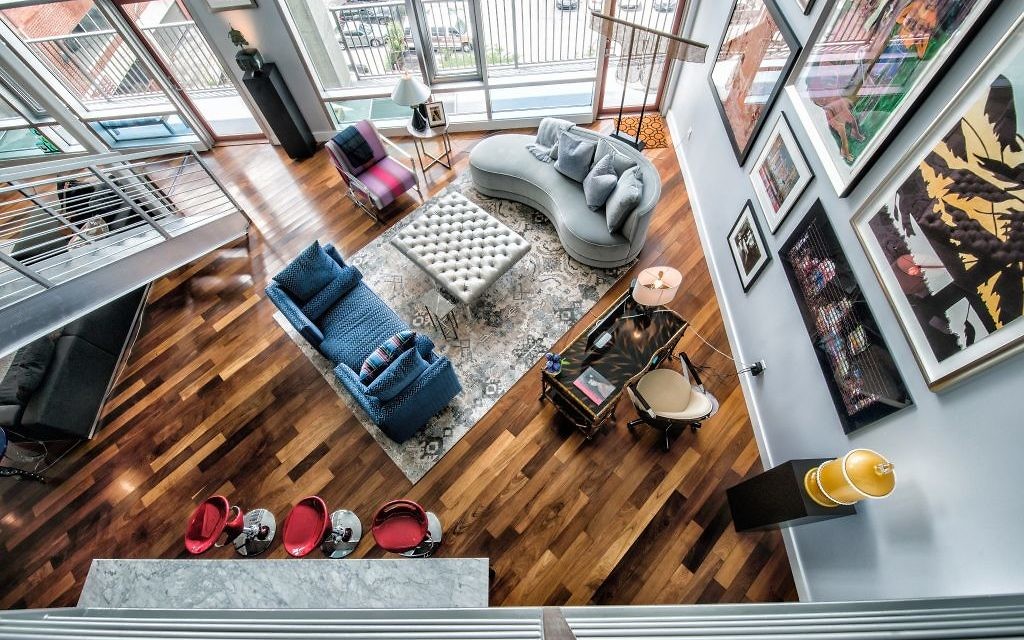
When envisioning an art collector, don’t limit your view to an older generation with deep pockets building a museum-worthy collection. Atlanta also has a younger generation of collectors who have relatively limited resources but thoughtfully acquire pieces that reflect their own sensibility and passion.
Atlanta native Avery Kastin, a commodities broker, is no stranger to the local cultural scene. An art history graduate of Columbia University, he resides in a stunning, art-filled Midtown loft that faces the city skyline.
But the real view is inside. For the past decade, he has pursued his love of art by collecting emerging and classic works from a variety of media. While photographs form the core of his collection, they are augmented by prints, pastels and oils.
Get The AJT Newsletter by email and never miss our top stories Free Sign Up
One of Atlanta’s most eligible bachelors, Kastin has been selected by the Atlanta Business Chronicle and the Atlanta Jewish Times as one of the “40 Under 40” for his leadership and numerous philanthropic endeavors.
Jaffe: How did you arrive at this space?
Kastin: It’s a rare combination of adjoining lofts to make a three-bedroom unit. Two lofts may be better than one, but I joke to my friends that I probably live in only 100 square feet. Elton John remarked that he bought his 18,000-square-foot condo not because he wanted so many bedrooms, but because he needed the wall space for his collection. I can relate on a much smaller scale. Ultimately, with floor-to-ceiling windows, it was the sweeping views of our skyline that made this place special for me.
Jaffe: Describe your style. How do you want to feel in your home?
Kastin: Comfortably contemporary. There is a misperception that contemporary design demands a stark, cold interior. This is where I live, and at the end of the day, I want it to feel like a home, not a museum.
Coming home is more enjoyable when you surround yourself with things you love. I want to feel stimulated and creative because that is what makes me happy. I have collected pieces of furniture and works of art over many years, during which my tastes have changed. While not everything adheres strictly to one aesthetic, they are all things that I connect with because they engage me on an emotional or intellectual level.
Jaffe: You paired with your mother, a phenomenal interior designer. Were there any glitches?
Kastin: There are two people you want in your family: a doctor and an interior designer. My brother is a talented doctor, and my mother, Ros Kastin, is a truly gifted interior designer.
I had an initial fear that my mom would impose her own tastes. We discussed the look that I was searching for, and she did an amazing job of creating a space that not only reflected my tastes, but was more beautiful than I could have ever imagined. And all within budget!
I only remember one argument. She designed a complex mechanism of sliding panels to provide the upstairs lofted bedrooms with privacy yet allow the option to remain open to the rest of the condo. I could not envision it and was convinced the result would look garish. In the end, it was an ingenious and elegant solution. The moral of the story: Listen to your mother.
Jaffe: Your master bedroom is eclectic and evocative.
Kastin: The furniture is the simplest part of the equation — only a few pieces that are basic in design, form and color, either all white or mirrored, plus a lot of open space, enabling the art to provide the emotional impact.
The contrast of different styles can produce striking effects. The lacquer screen is a superb 19th century coromandel. Originally intended as a room divider, I mounted it flat against the wall to provide a decorative backdrop. The jade-colored Chinese vases and two classical black-and-white photographs of the Far East by Michael Kenna echo the screen’s theme and color palette, making it more unified.

The serenity of the Eastern-oriented pieces and simplicity of the room contrast dramatically with the startling Geagan piece “Elsie From Chelsea.” Next to the tranquility of the black-and-white landscape photographs and contained by the gray concrete structural column, its swirling vortex of loud colors and even louder subject matter makes for a powerful exclamation point in an otherwise serene setting.
Jaffe: You are a collector of Joseph Geagan.
Kastin: I had been in a black-and-white photography phase for a few years, attracted by its simplicity of line and form. Then I walked into a gallery and saw Joseph Geagan’s large pastel works. They were an explosion of color, and the subject matter was very risqué and modern. It felt like rebelling from the classicism of black-and-white photography. I love his use of a very traditional medium (pastel on paper) to depict very contemporary scenes.

Jaffe: Describe your foyer photography collection.
Kastin: I am drawn to the beauty and simplicity of black-and-white photography. Without the distraction of color, it lays bare the image in a way that tells a stronger story.

I showcase a few different artists’ approach to black-and-white/monochromatic photography. Kertész’s “Washington Square Park” (1954) and Dezso’s “Forest With Mistletoe” (2014) both capture winter landscapes, using a snowy setting to reduce their images down to contrasting lines and shapes of black and white. The result they achieve is less about the subject matter and more about creating balanced yet dynamic pictorial compositions.
Jaffe: Last word.
Kastin: What is wonderful is how obtainable it is to collect great works of art. The notion that the art world is open only to the wealthy is a myth. Many artists, both classical and emerging, have thought-provoking and moving pieces that have meaning and are affordable. The art world may seem daunting, but it truly is approachable.
Photos by Duane Stork
-
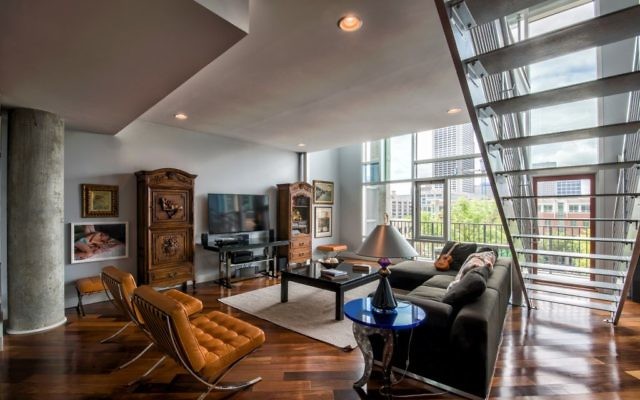
- The king and queen armoires in the TV room are never-reproduced Maitland-Smith cabinets created by Italian woodcarvers in the 1970s.
-
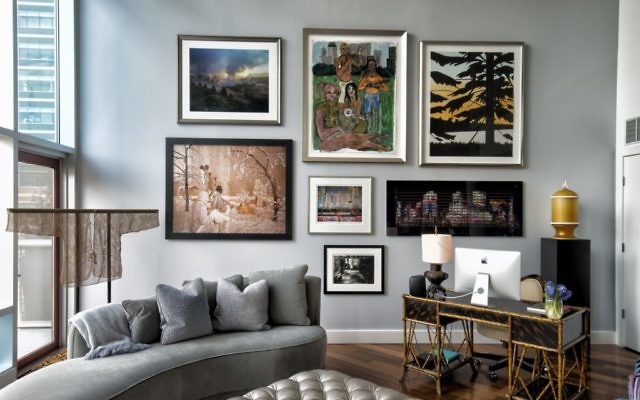
- The works on display in the living room include “Blue Ridge Paper Mill” by Jeff Rich, “Raining Popcorn” by Sandy Skoglund, “Fiddling Mykkis” by Joseph Geagan, “Hong Kong — 6,426 per km2” by Greer Muldowney, “Twilight 2” by Alex Katz and “New York Times Square at Night” by Thomas Kellner. Chinese aristocracy used the 18th century bamboo woven textile (left) to protect silk garments.
-
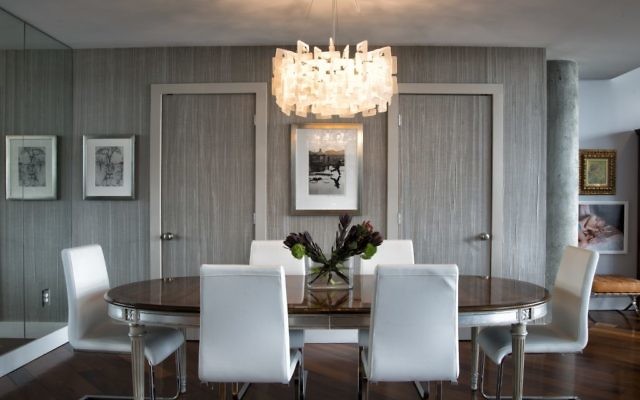
- A silver textured linen wallpaper, Antwerp by Cuvel, provides the backdrop for André Kertész’s “Washington Square Park” (left) and Henri Cartier-Bresson’s “Behind Gare Lazare” (center) in the dining room, where the mirrored wall reflects the downtown skyline.
-
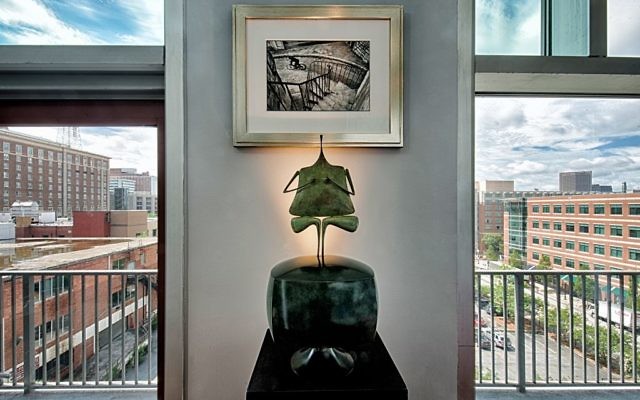
- French sculptor Philippe Hiquily’s “La Croqueuse de Diamants” sits below the photograph “Hyeres” by Henri Cartier-Bresson.
-
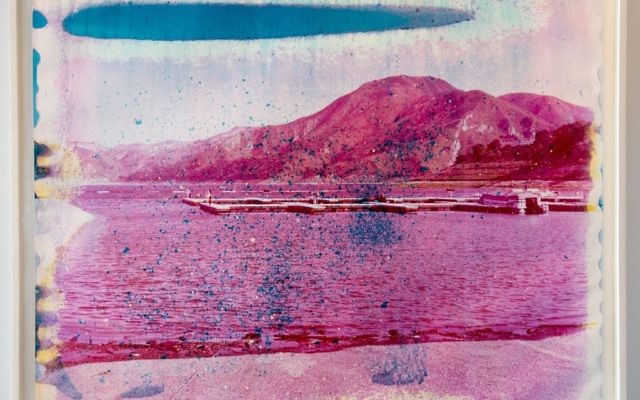
- Pink-hued “Yuba Lake #7” is from Matthew Brandt’s “Lakes & Reservoir Series,” in which the artist soaks the work in the lake water it represents to break down the photographic image.




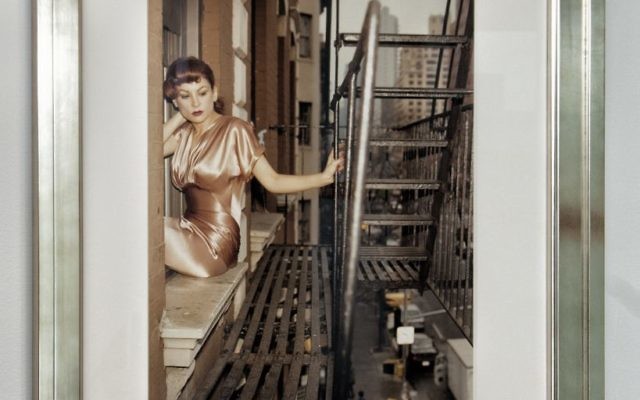
comments